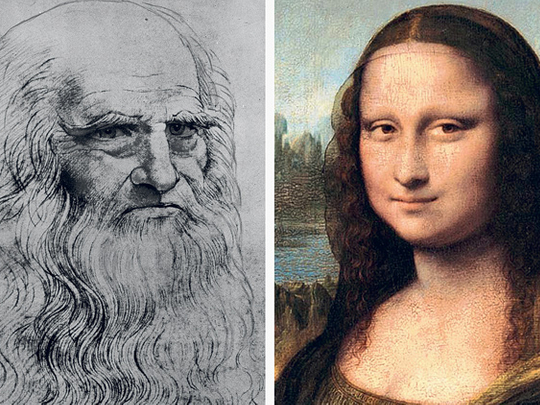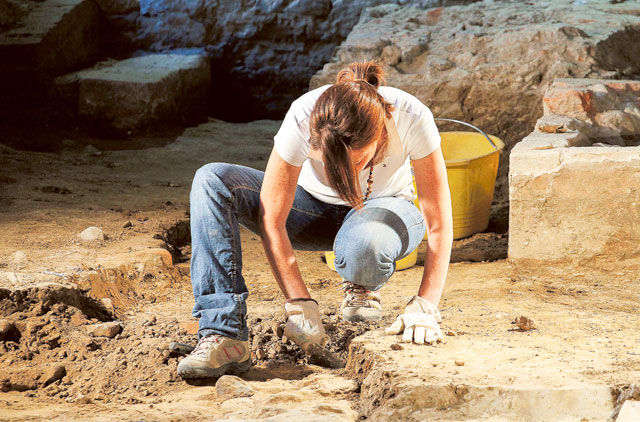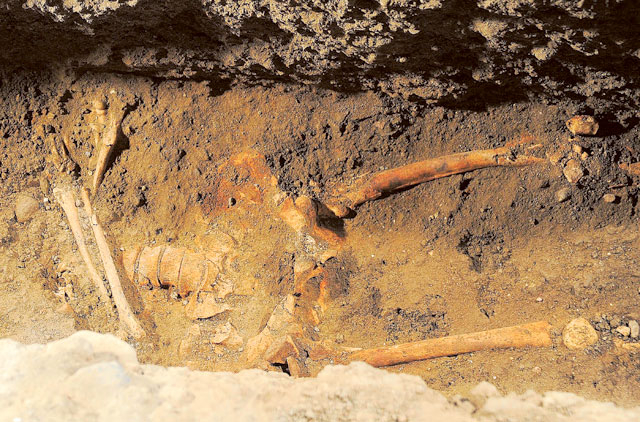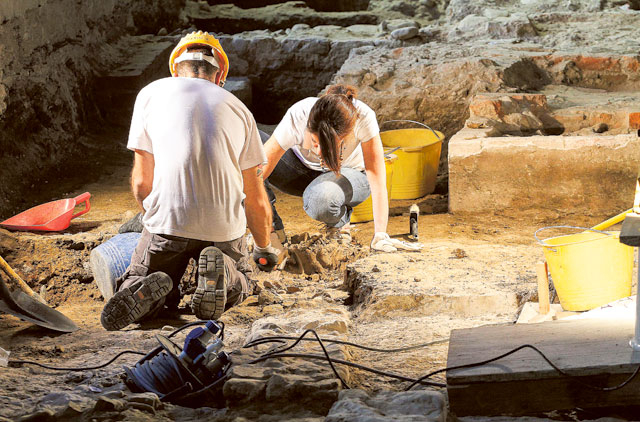
Florence: The mystery surrounding the Mona Lisa could finally be resolved.
Archaeologists have found a skeleton they believe belonged to Lisa Gherardini, the woman who posed for Leonardo da Vinci’s painting, buried beneath the floor of a convent in Florence, Italy.
Lisa Gherardini was married to Francesco del Giocondo, a silk merchant. The Mona Lisa is known as La Gioconda in Italy.
Most modern historians believe the woman in the Mona Lisa was Lisa del Giocondo. She became a nun after her husband died. She passed away in the convent on July 15, 1542, at age 63.
An archaeological team started digging at the abandoned Convent of Saint Ursula last year. They had to dig through thick concrete, laid down before plans to turn the convent into an army barracks.
They found a crypt they believe to have been Lisa’s final resting place. They also unearthed a female-sized human skull.
The skull was found five feet under the convent’s original floor along with fragments of ribs and vertebrae. The dig was suspended when the team ran out of funds, but they resumed last month.
Human skeleton
This week they found a human skeleton. The bones will undergo tests to establish if they match the skull found last year. Scientists will compare the DNA in the bones with the remains of the model’s two children who were buried nearby.
Once they have verified the skeleton and skull belong to the woman, forensic artists will try to reconstruct her face to see how it compares to the 500-year-old version painted by da Vinci — and perhaps solve the mystery of the Mona Lisa’s smile.
Silvano Vinceti, archaeologist in charge of the dig, said: “We don’t know yet if the bones belong to one single skeleton or more than one. But this confirms our hypothesis that in St Ursula convent there are human bones and we cannot exclude that among them there are bones belonging to Lisa Gherardini.”
The initial discovery was made using ground penetrating radar and ancient maps and documents. It came after a foot of modern concrete was removed and unearthed a layer of ancient, 90cm wide bricks.
Exciting development
Professor Vinceti said of the first discovery: “This is a very exciting development and the find is consistent with our records and our preliminary research. The crypt we have found is the one that was mentioned in church records from 1495 and was reached via a grate and then a staircase. We also know from those records that in 1625 there was a second crypt and these are the ones we have found."
Natalia Gucciardini Strozzi, who is related to Lisa Gherardini, said after the skull was discovered: ‘It was so emotional being here — I didn’t think I would get so emotional. I am certain that this is the final resting place of Lisa Gherardini.”
Strozzi is present at the dig.
This is not the first time that Professor Vinceti has used such techniques in his work — last year similar methods were used to locate and identify the remains of Caravaggio, another Renaissance master.
Vincenti also claimed last year that a hidden message could be seen in the eyes of the Mona Lisa after examining them with a high powered magnifying glass. Da Vinci started to paint the Mona Lisa in 1503 or 1504 and finished it in 1519.














